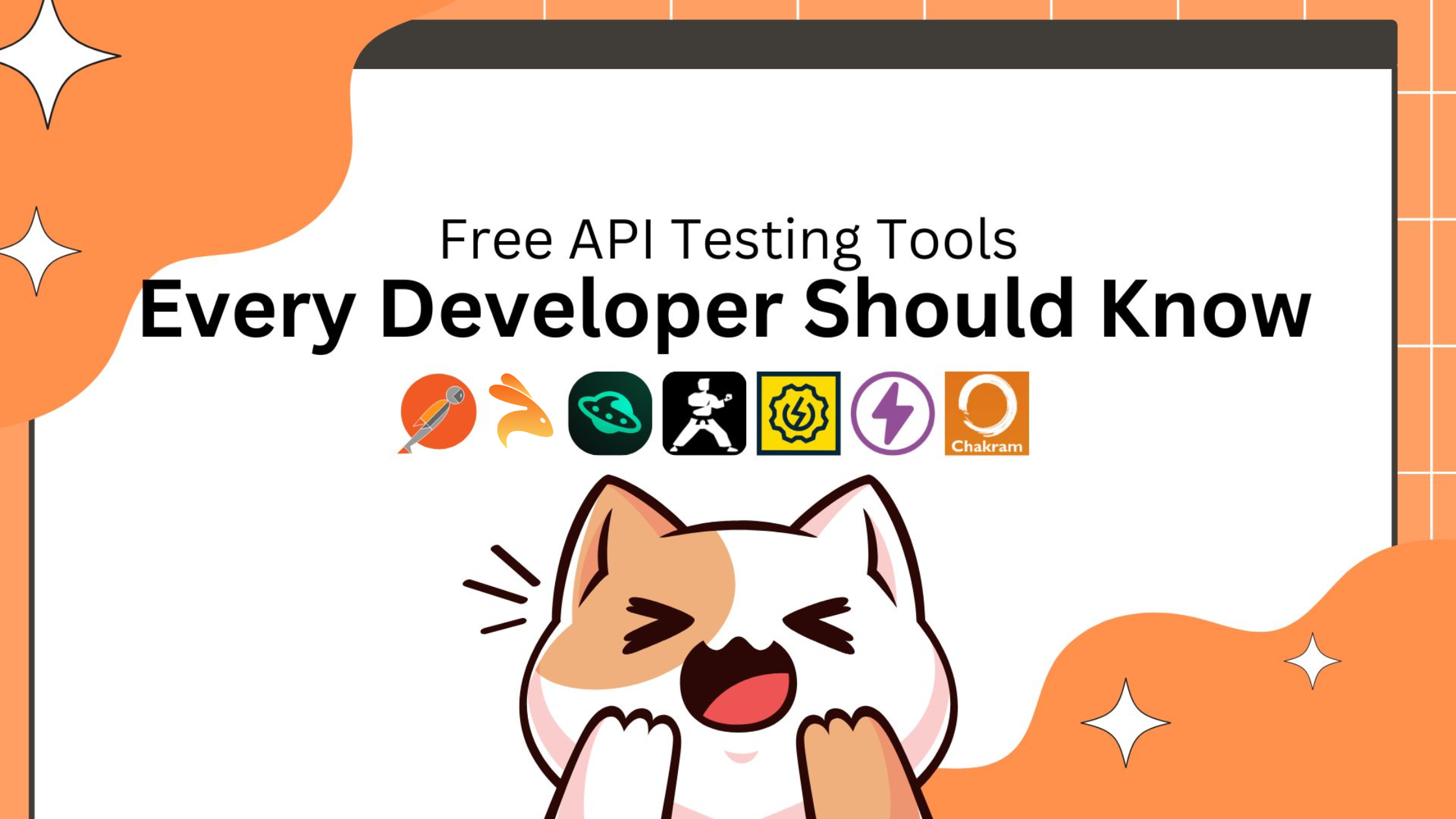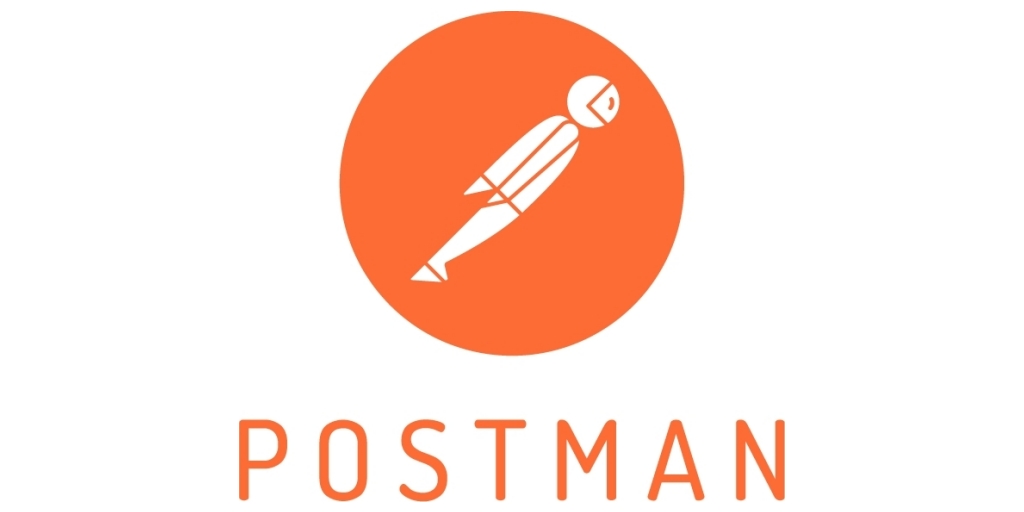Top 7 Free API Testing Tools for Developers in 2025
 Abhishek kushwaha
Abhishek kushwahaTable of contents
- What is API Testing?
- Types of API Testing
- Why is API Testing Important in an API-First World?
- Benefits of API Testing
- Challenges of API Testing
- The 7 Best Free API Testing Tools for Developers in 2025
- 1. Keploy
- 2. Postman
- 3. Apidog
- 4. Karate
- 5. Chakram
- 6. SoupUI
- 7. Hoppscotch
- Conclusion
- FAQ
- What is API testing?
- Why is API testing important?
- What are the best free API testing tools in 2025?
- Can API testing be automated?
- What’s the difference between API testing and UI testing?
- Which types of testing does API testing include?
- What are some essential free API testing tools for developers?
- What makes Apidog a user-friendly API testing tool?
- What is unique about Karate as an API testing tool?
- How does SoapUI enhance API testing?
- What are the benefits of using Hoppscotch for API testing?
- Can API testing tools integrate with CI/CD pipelines?
- How can data-driven testing improve API testing?

In the fast-evolving, API-first world of modern software engineering, delivering stable and high performance APIs is critical. Whether you’re building RESTful web services, working with microservices, or managing complex integrations, API testing has become an essential step in ensuring the reliability, performance, and security of your backend systems.
API testing is a vital aspect of contemporary software development, ensuring that the interfaces between various components and systems function as intended. It helps detect errors early in the software development lifecycle, validates data flows across services, and guarantees that API endpoints are doing exactly what they’re supposed to do nothing more, nothing less.
In this blog, we’ll dive into some of the top free API testing tools that every developer should know about in 2025! From simple HTTP clients to fully-featured automated testing suites, these API testing tools are built to fit a variety of workflows, tech stacks, and experience levels. Whether you're testing APIs for functionality, performance, security, or reliability, these tools are designed to help you build better, more robust applications.
What is API Testing?
API testing is a type of software testing that focuses on verifying whether application programming interfaces (APIs) work as expected. It ensures that the connections between services, systems, or applications are functioning correctly. Unlike UI testing, API testing is conducted at the message layer without a user interface, making it faster and more reliable for validating backend logic.
Key Features of API Testing:
Tests business logic and data responses
Verifies API performance under various load conditions
Ensures security, reliability, and correct error handling
Conducted early in the development cycle
Ideal for automated testing and CI/CD pipelines
Types of API Testing
There are several types of API testing, each focusing on different aspects of the API:
Functional Testing – Validates API responses and outputs based on input parameters.
Load Testing – Measures API behavior under expected and peak loads.
Security Testing – Identifies vulnerabilities such as data leaks or unauthorized access.
Penetration Testing – Simulates malicious attacks to find security loopholes.
Fuzz Testing – Tests APIs with random or invalid data to ensure robustness.
UI Testing via API – Ensures that the front-end correctly consumes APIs.
Validation Testing – Checks the accuracy and correctness of API data and responses.
Regression Testing – Ensures new changes haven’t broken existing functionality.
Integration Testing – Verifies interactions between multiple services via APIs.
Why is API Testing Important in an API-First World?
In today’s API-first software architecture, applications rely heavily on APIs to exchange data and services. API testing ensures that these vital connections work flawlessly across mobile apps, web apps, and microservices.
Here's why API testing is critical:
Prevents failures in distributed systems
Improves user experience by avoiding back-end crashes
Ensures faster and more stable product development cycles
Enhances the quality assurance (QA) process
Supports scalability and modular architecture
Benefits of API Testing
Early bug detection in development
Faster feedback compared to UI tests
Better test coverage for different environments
Allows for automated API test execution
Ideal for continuous integration and delivery (CI/CD) workflows
Improves overall software quality and security
Challenges of API Testing
Requires strong understanding of HTTP protocols and API documentation
Creating and maintaining test cases for large APIs can be complex
Requires simulation of different API endpoints and data flows
Handling different authentication types (OAuth, API Keys, JWT, etc.)
Difficult to test real-time APIs or services dependent on third-party APIs
The 7 Best Free API Testing Tools for Developers in 2025
1. Keploy
Keploy is an open-source, developer-centric backend testing tool. It makes backend testing easy and productive for engineering teams. It can create test cases and data mocks/stubs from user-traffic by recording API calls and DB queries, significantly speeding up releases and enhancing reliability.
Key Features: Test case generation, data mocks, automatic DB query recording.
Protocols: HTTP, REST, DB Protocols.
Pros: Fast test setup, reduces manual work, open-source, integrations with various CI/CD tools and testing frameworks.
2. Postman

Postman is a versatile REST client essential for API testing and development. Initially a Chrome plugin, it is now available as native apps for Mac, Windows, and Linux. It supports automated and exploratory testing, suitable for unit and integration tests.
Key Features: Automated tests, request collections, mock servers, and environments.
Protocols: HTTP, REST, SOAP.
Pros: User-friendly GUI, extensive integrations, easy setup.
Cons: Resource-heavy, lacks advanced automation for large test suites.
3. Apidog

Apidog is a user-friendly, free API testing tool with powerful features. It allows developers and testers to send real-time HTTP requests to APIs. Its simplicity makes it suitable for both beginners and experts. Users can customize parameters for various testing scenarios, and the tool offers features like test data generation, request and response validation, and integration with CI tools for automation.
Key Features: Test data generation, request/response validation, CI/CD integrations.
Protocols: HTTP, REST.
Pros: Simple interface, beginner-friendly, fast.
Cons: Lacks advanced testing features like load testing.
4. Karate

Karate is an open-source API test automation framework built on top of Cucumber. It combines API testing and mocking into a unified DSL and integrates with popular CI/CD platforms like Jenkins. Karate is great for teams with strong Java skills to rapidly implement API test automation.
Key Features: DSL for testing & mocking, automated functional/regression tests, data-driven testing.
Protocols: HTTP, REST, SOAP.
Pros: Flexible, ideal for Java teams, integrates with CI/CD.
Cons: Requires Java knowledge, complex setup for beginners.
5. Chakram

Chakram is a REST JavaScript API testing tools framework with a BDD testing style and fully exploiting promises. It is designed for HTTP assertions and provides a simple and readable DSL (Domain-Specific Language) that makes it easy for developers and testers to write tests.
Key Features: Promise-based assertions, BDD-style syntax.
Protocols: HTTP, REST.
Pros: Easy for JavaScript developers, simple syntax.
Cons: Limited to JavaScript, basic feature set.
6. SoupUI

SoapUI, introduced in 2005 by SmartBear Software, has become a key tool in API testing. This open-source tool is well-known for its strong capabilities in automated functional, regression, compliance, and load testing of both REST and SOAP APIs.
Key Features: Automated testing, security testing, load testing, data-driven tests.
Protocols: HTTP, REST, SOAP.
Pros: Powerful testing features, strong enterprise support.
Cons: Resource-heavy, steep learning curve for beginners.
7. Hoppscotch

Hoppscotch (formerly known as Postwoman) is an open-source, web-based API development tool known for its simplicity and accessibility. Its open-source nature and self-hosting options appeal to organizations valuing transparency and customization. Hoppscotch's keyboard-centric design enhances efficiency, making it a flexible and secure solution for individual developers, teams, and organizations.
Key Features: Minimalist interface, WebSocket and GraphQL support, collaborative workspaces.
Protocols: HTTP, REST, WebSocket, GraphQL.
Pros: Fast, simple, easy collaboration.
Cons: Limited advanced features for complex testing.
Conclusion
API testing is vital to ensure the seamless functioning of software interfaces. In this article, we explore the best free API testing tools - Keploy, Postman, SoapUI, Karate and Hoppscotch. Each tool offers unique features tailored to different testing needs, helping developers efficiently validate, monitor, and optimize their APIs. By leveraging these tools, developers can boost application reliability, improve performance, and deliver an enhanced user experience.
In an API-first development landscape, ensuring the reliability and functionality of your APIs is not just beneficial, it's essential. With the right API testing tools, you can catch bugs early, boost automation, and ship stable features faster. Whether you're a solo developer or part of a larger QA team, these free API testing tools empower you to write better test cases, improve your test coverage, and streamline your testing process. Start integrating API testing into your workflow today and watch your software quality skyrocket.
FAQ
What is API testing?
API testing is a type of software testing that validates whether APIs function correctly, reliably, and securely by sending requests and verifying the responses.
Why is API testing important?
It helps catch bugs early, ensures data integrity, validates business logic, and maintains system reliability in applications that rely on APIs for communication.
What are the best free API testing tools in 2025?
Some top free API testing tools include Postman, Hoppscotch, Insomnia, REST Assured, Katalon Studio, JMeter, and SoapUI.
Can API testing be automated?
Yes! API testing is highly suitable for automation. Tools like REST Assured, Postman (via Newman), and Katalon Studio allow easy integration into CI/CD pipelines.
What’s the difference between API testing and UI testing?
API testing focuses on the data exchange and logic between systems, while UI testing validates the user interface and user experience elements of an application.
Which types of testing does API testing include?
API testing involves functional testing, security testing, load testing, fuzz testing, regression testing, and integration testing.
What are some essential free API testing tools for developers?
Some essential free API testing tools for developers include Postman, Apidog, Karate, Chakram, SoapUI, Thunder Client, and Hoppscotch. Each of these tools offers unique features catering to different testing needs and preferences.
What makes Apidog a user-friendly API testing tool?
Apidog is user-friendly due to its simplicity and powerful features. It allows developers to send real-time HTTP requests to APIs, customize parameters for various testing scenarios, and offers features like test data generation, request and response validation, and integration with CI tools for automation.
What is unique about Karate as an API testing tool?
Karate is an open-source API test automation framework built on top of Cucumber. It combines API testing and mocking into a unified DSL and integrates with popular CI/CD platforms like Jenkins, making it ideal for teams with strong Java skills.
How does SoapUI enhance API testing?
SoapUI is known for its strong capabilities in automated functional, regression, compliance, and load testing of both REST and SOAP APIs. It supports advanced data-driven testing, allowing testers to run tests with different input data to simulate various real-world scenarios.
What are the benefits of using Hoppscotch for API testing?
Hoppscotch is an open-source, web-based API development tool known for its simplicity and accessibility. It offers a minimalist interface and a comprehensive set of tools, making it ideal for developers who value speed and simplicity. Its collaborative features and keyboard-centric design enhance efficiency and streamline workflows.
Can API testing tools integrate with CI/CD pipelines?
Yes, many API testing tools, such as Karate and Apidog, offer integration with popular CI/CD platforms like Jenkins. This allows for automated testing as part of the continuous integration and delivery process, ensuring that APIs function correctly throughout the development lifecycle.
How can data-driven testing improve API testing?
Data-driven testing involves running tests with different sets of input data to simulate various real-world scenarios. This approach helps identify potential issues and ensures that the API can handle a wide range of inputs. Tools like SoapUI support advanced data-driven testing, enhancing the depth and scope of API testing.
Subscribe to my newsletter
Read articles from Abhishek kushwaha directly inside your inbox. Subscribe to the newsletter, and don't miss out.
Written by

Abhishek kushwaha
Abhishek kushwaha
🥑intern @keployio| @github Campus Expert 🚩| Developer | Building @hackthesource| x1 @github certified
